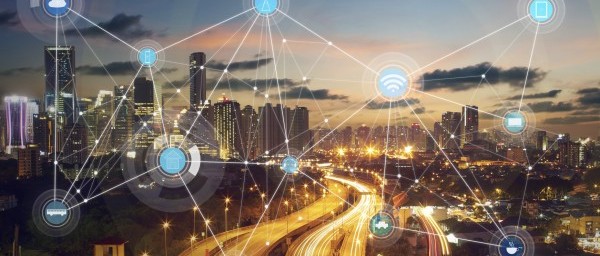Many cities across America are working to implement initiatives that make their community smarter. In order to create Smart Communities, governments are building hubs of innovation and using location data to extract insights from smart sensors. These capabilities promote a high quality of life in the communities by enhancing services, responsiveness, safety and security of citizens.
However, the framework for smart cities is also starting to be applied to other government and military installations. This allows them to transform installations into Smart Installations. To understand better what a Smart Installation is and how to become one, GovLoop sat down with Sonny Beech, IoT Business Development Manager at GIS, Inc. and Ben Conklin, Defense Industry at Esri for a recent online training, “Leveraging Smart Communities Framework for Installations.”
A Smart Installation creates a sustainable environment while promoting a high quality of life through the same framework as Smart Communities. “The goal of smart installations is to deliver improved services while improving the overall readiness of an organization,” Conklin explained. This is achieved through managing assets in real time, coordinating projects across departments, making data-driven decisions, and promoting transparency throughout these processes.
Geographical Information Systems (GIS) is one way that smart installations are facilitating these processes. Smart Installations leverage technology that collect a large volume of data, making it difficult to search through the data and pick out what is meaningful. “The value of GIS is that it gives us information in context about our world and provides a framework for understanding installations and brings factors together that allow us to visualize and analyze the data,” Conklin said.
Visualizing data on maps helps connect the different workflows across an installation, giving them a common language for information sharing. These more integrated workflows foster a more productive, efficient, transparent, and collaborative workforce, who can ultimately better serve the installations community.
An example of a Smart Installation can be seen in Rancho Cucamonga, California. Conklin explained, “the public safety installation created dashboards to collect and display real time information on accidents, police incidents and fires. This allows field employees to document critical incidents in apps and act as live information centers.”
From there, the city’s GIS team was able to compile the data into a portal that provides a live dashboard for city personnel. “Rancho Cucamonga’s approach to capturing and visualizing data transformed the city, allowing public employees to do perform their jobs more efficiently and more easily share data with citizens,” Conklin said.
Installations can also leverage the power of the Internet of Things (IoT) to improve safety and drive efficiency. Beech explained that IoT infrastructure is moving towards visual light communication (VLC). This means that IoT sensors are being placed in lights inside and outside of buildings in order to make them an IoT-enabled sensor.
For example, Beech and his team are working with federal buildings to implement IoT technology to enhance active shooter protocols. This includes capabilities like thermal and noise detection sensors in a building’s lights. This allows emergency management teams to pinpoint when and where a gun is fired in a facility. “This infrastructure fosters energy and emergency management,” Beech explained.
So how exactly does an installation become a smart installation? Conklin posited four easy steps:
- Use a world class GIS platform. Esri’s ArcGIS platform allows you to integrate mapping and spatial analysis into your business system dashboards for the most effective visualization of data.
- Build a location strategy. Determine where the highest need areas are in your installation and where the ArcGIS platform can have the most valuable impact.
- Deliver real solutions. Through the ArcGIS platform, you gain access to a lot of useful applications that can help get your strategy off the ground.
- Develop strategic partnerships. Take advantage of the Esri community and reach out to the partner organizations you have access to through the ArcGIS platform.
Still have questions about how to deploy smart strategies? Check out the full-length webinar here.






Leave a Reply
You must be logged in to post a comment.